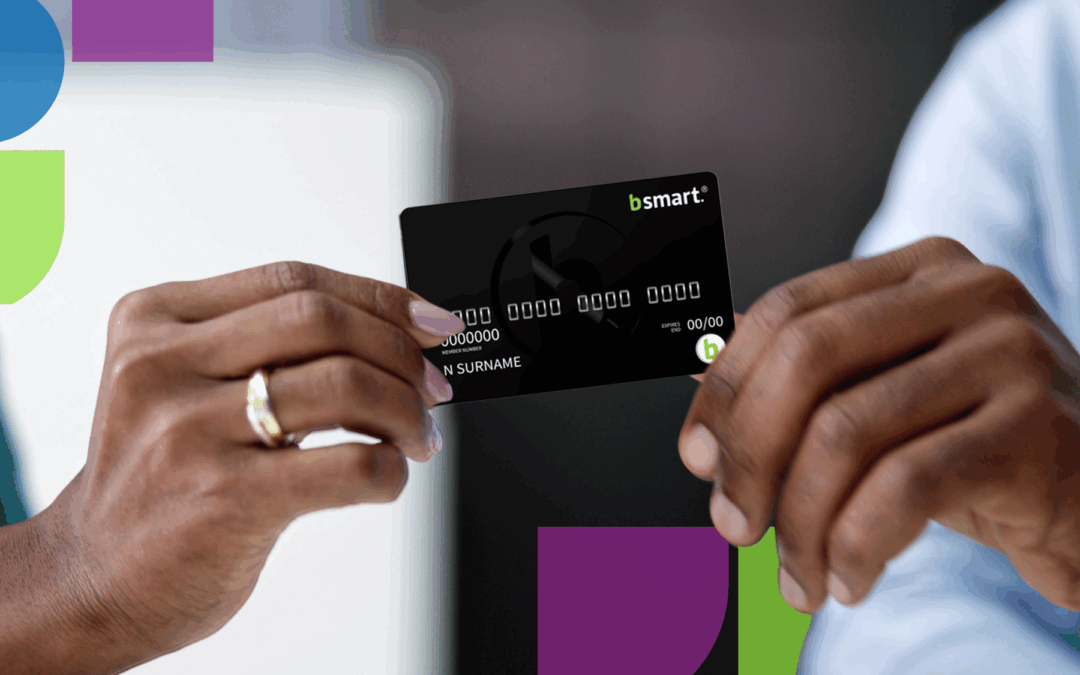 2025 was a standout year for bsmart members – from everyday swipes, cashback rewards and Better Price savings, to another successful bonus payout period and a growing online community. This month’s newsletter wraps up the year with festive deals, a new Memory...
2025 was a standout year for bsmart members – from everyday swipes, cashback rewards and Better Price savings, to another successful bonus payout period and a growing online community. This month’s newsletter wraps up the year with festive deals, a new Memory...
 South Africans take loyalty cards seriously. We love a good discount, a cashback reward, or anything that helps the monthly budget behave itself. But the admin? The stack of cards in your wallet? The faded barcodes? The “I swear it was here earlier” scramble at the...
South Africans take loyalty cards seriously. We love a good discount, a cashback reward, or anything that helps the monthly budget behave itself. But the admin? The stack of cards in your wallet? The faded barcodes? The “I swear it was here earlier” scramble at the...
 For more than 75 years, South African families have trusted bsmart – passing the card from one generation to the next. That loyalty has built one of the country’s largest independent shopping networks, connecting members to over 800 top retailers and 15 000...
For more than 75 years, South African families have trusted bsmart – passing the card from one generation to the next. That loyalty has built one of the country’s largest independent shopping networks, connecting members to over 800 top retailers and 15 000...
 This October, take a moment to pat yourself on the back and celebrate how far you’ve come with bsmart, whether it’s saving on groceries, spoiling the grandkids, or picking up birthday gifts, you’ve done it the smart way, with cashback in hand. Because at the end of...
This October, take a moment to pat yourself on the back and celebrate how far you’ve come with bsmart, whether it’s saving on groceries, spoiling the grandkids, or picking up birthday gifts, you’ve done it the smart way, with cashback in hand. Because at the end of...
 At bsmart, our story isn’t just about a card, cashback bonuses, or retail partners, it’s about you, our members. For decades, your everyday choices have shaped who we are. Whether it’s a trolley full of groceries at Pick n Pay at the best price, a full tank at BP, or...
At bsmart, our story isn’t just about a card, cashback bonuses, or retail partners, it’s about you, our members. For decades, your everyday choices have shaped who we are. Whether it’s a trolley full of groceries at Pick n Pay at the best price, a full tank at BP, or...
 This September, we turn the spotlight where it truly belongs – on you, our bsmart members. You’ve been at the centre of countless everyday moments, from the weekly grocery shop to special celebrations, and it’s those stories that make our community what it is....
This September, we turn the spotlight where it truly belongs – on you, our bsmart members. You’ve been at the centre of countless everyday moments, from the weekly grocery shop to special celebrations, and it’s those stories that make our community what it is....
 Spring is in the air – bringing open windows and the irresistible urge to refresh and declutter. For many of us, this preparation begins with our closets. Unworn clothes are set aside to sell, forgotten items resurface from the corners, and soon, everything else is...
Spring is in the air – bringing open windows and the irresistible urge to refresh and declutter. For many of us, this preparation begins with our closets. Unworn clothes are set aside to sell, forgotten items resurface from the corners, and soon, everything else is...
 This August, as we honour Women’s Month, bsmart celebrates the smart, strategic, and empowered women across South Africa who are using their bsmart cards to take control of their finances. Join us in celebrating the women reshaping their financial journeys. Keep...
This August, as we honour Women’s Month, bsmart celebrates the smart, strategic, and empowered women across South Africa who are using their bsmart cards to take control of their finances. Join us in celebrating the women reshaping their financial journeys. Keep...
 August in South Africa is more than just another page on the calendar, it’s a powerful reminder of the strength, resilience, and brilliance of women across the country. Women’s Month honours the legacy of the 1956 women’s march against pass laws, and today, that same...
August in South Africa is more than just another page on the calendar, it’s a powerful reminder of the strength, resilience, and brilliance of women across the country. Women’s Month honours the legacy of the 1956 women’s march against pass laws, and today, that same...
 This month, we’re celebrating National Savings Month and putting your budgeting skills to the test with the R150 Challenge. Can you stretch R150 and still walk away with essentials, and maybe even a treat? We did. Now it’s your turn. Plus, stay tuned for exclusive...
This month, we’re celebrating National Savings Month and putting your budgeting skills to the test with the R150 Challenge. Can you stretch R150 and still walk away with essentials, and maybe even a treat? We did. Now it’s your turn. Plus, stay tuned for exclusive...











